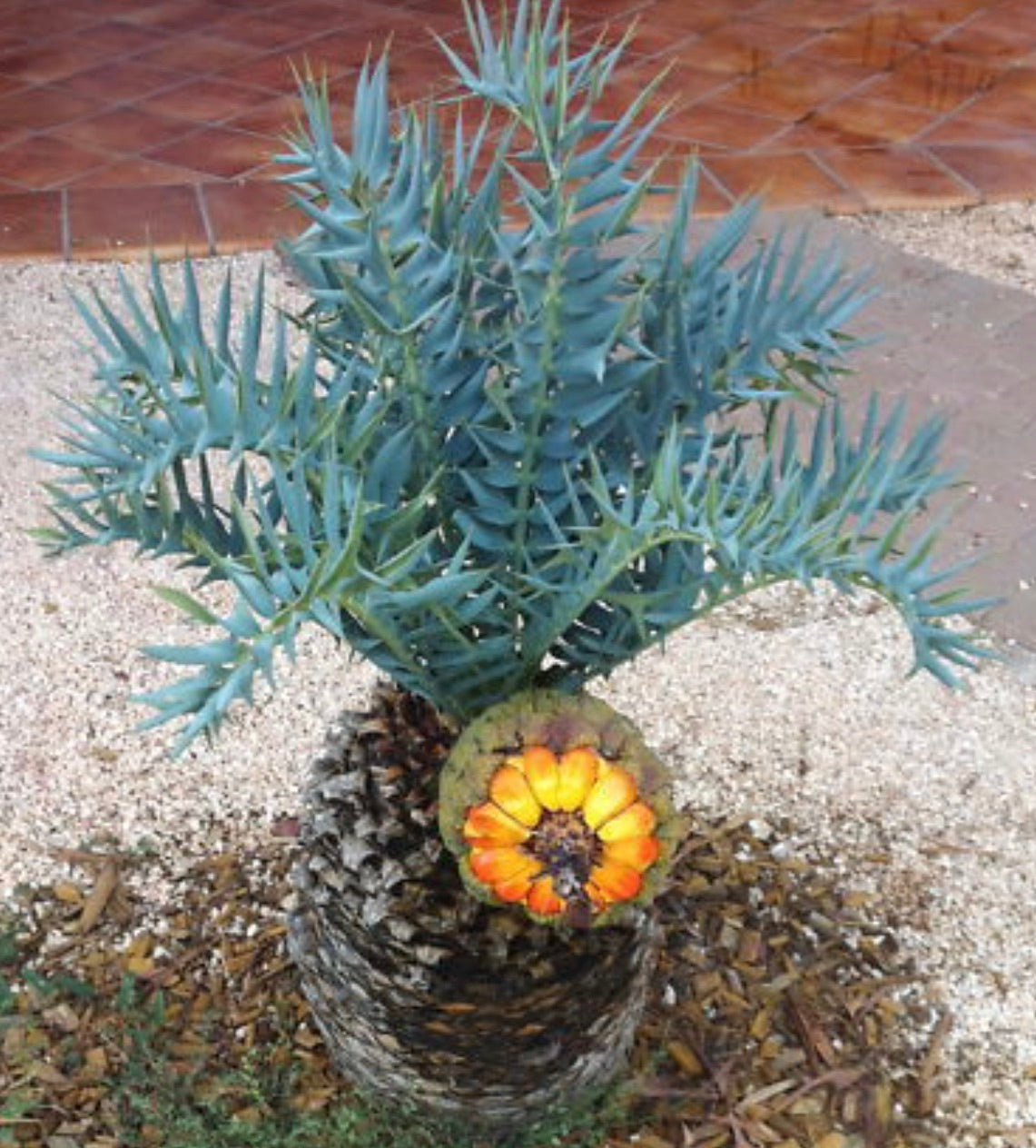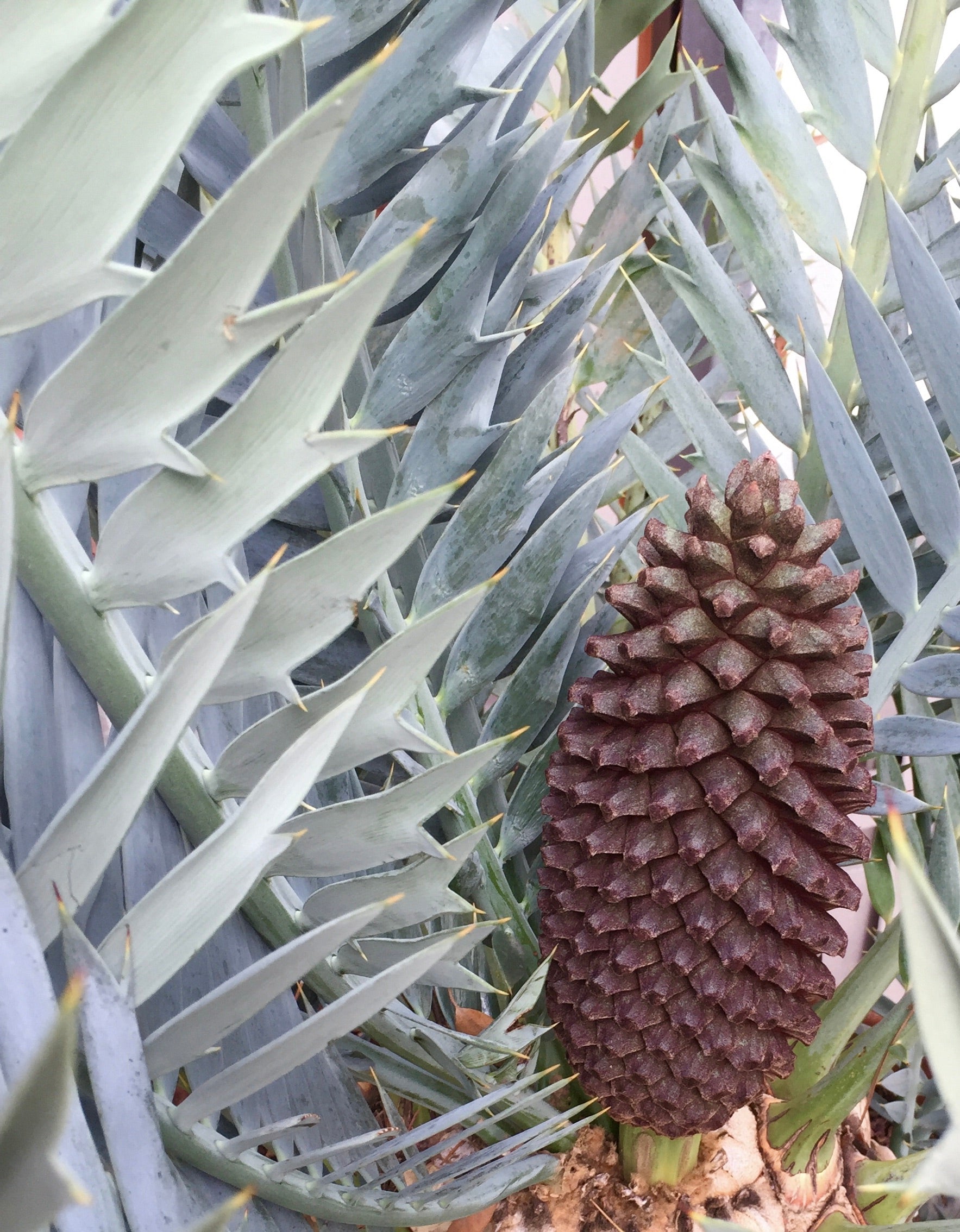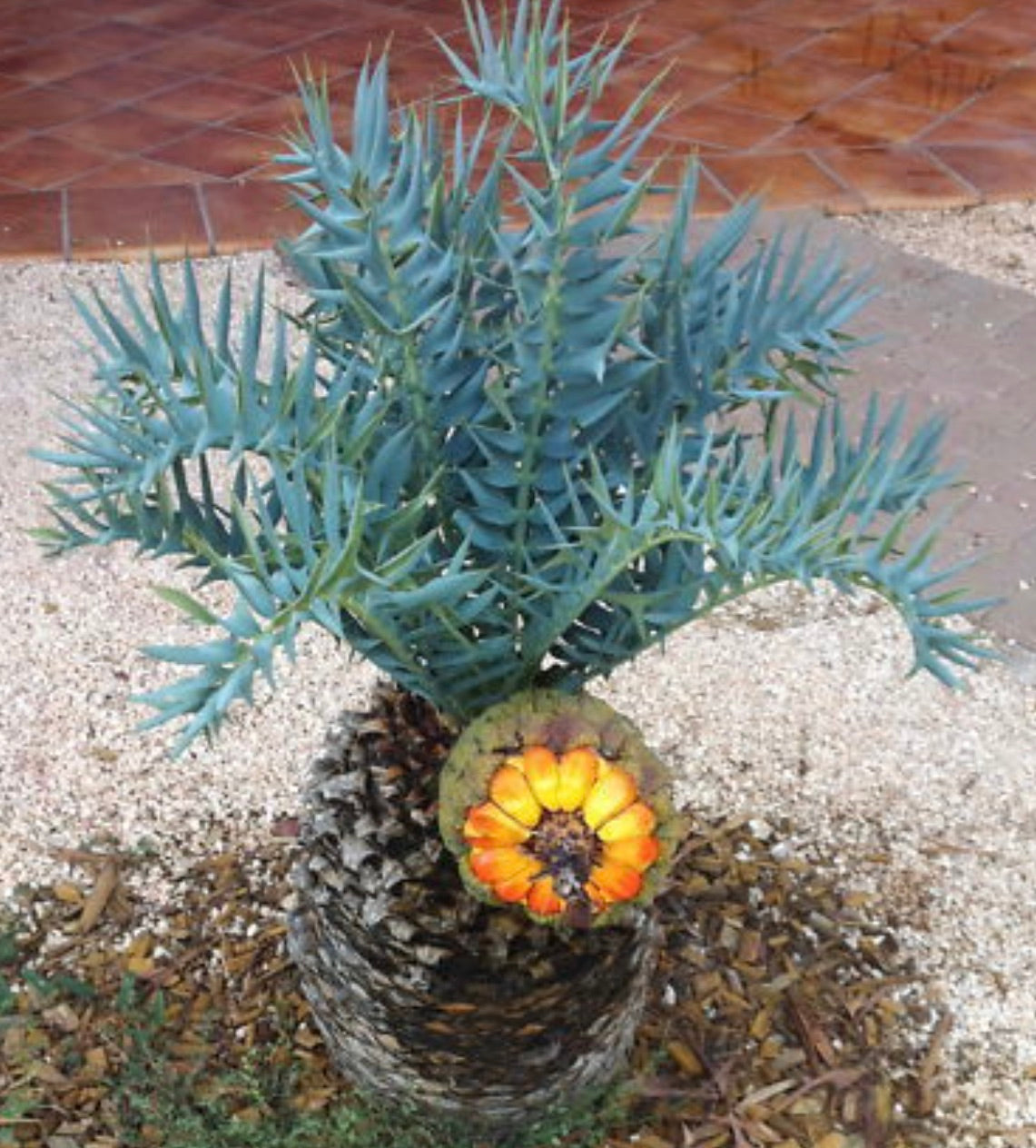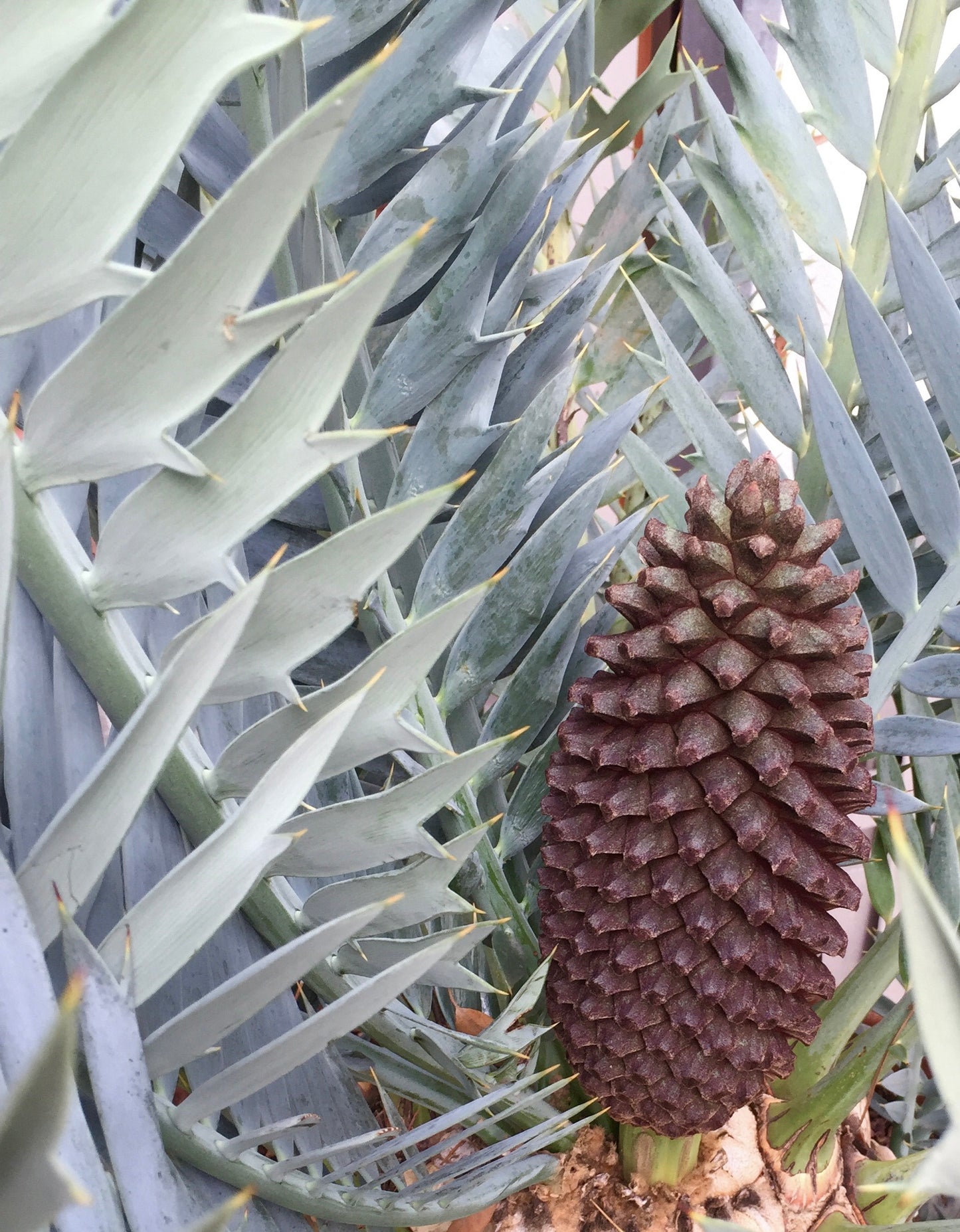- Seeds
Encephalartos horridus SEEDS
Encephalartos horridus SEEDS
Couldn't load pickup availability
Product Description
Encephalartos horridus is a remarkable species of cycad, renowned for its unique appearance and resilience. Here is a description of this species along with information about its discovery and cultivation tips for growing plants from seeds:
Description: Encephalartos horridus, commonly known as the Eastern Cape blue cycad, is a slow-growing cycad native to the Eastern Cape Province of South Africa. It is characterized by its striking bluish-gray to silver-blue foliage, which emerges in tightly packed rosettes atop a stout, woody trunk. The leaves are stiff and sharply pointed, giving the plant a distinctly rugged and prehistoric appearance. Encephalartos horridus is dioecious, meaning individual plants are either male or female, and reproduction occurs via cones produced on separate male and female plants. The cones are typically cylindrical and can vary in color from green to brown, depending on the sex of the plant.
Discovery: Encephalartos horridus was first discovered and described by the English botanist John Medley Wood in 1912. Wood encountered this species during botanical expeditions to the Eastern Cape Province of South Africa. Its distinctive appearance and habitat in rocky, mountainous terrain made it a notable find among cycad enthusiasts and botanists alike.
Cultivation Tips for Growing Plants from Seeds:
- Seed Collection: Collect seeds from mature female cycads when they are fully ripe. Seeds are typically enclosed within fleshy cones that will begin to disintegrate as they mature.
- Cleaning: Remove the seeds from the cones and rinse them thoroughly to remove any remaining flesh or debris.
- Scarification: Some growers recommend scarifying the seeds, either by nicking the seed coat or soaking them in a diluted bleach solution, to improve germination rates.
- Planting Medium: Plant the seeds in a well-draining, sterile potting mix formulated for succulents or cacti.
- Planting Depth: Bury the seeds shallowly in the planting medium, just deep enough to cover them with a thin layer of soil.
- Watering: Keep the soil consistently moist but not waterlogged. Water from the bottom to prevent disturbing the seeds.
- Temperature and Light: Provide warm temperatures (around 70-80°F or 21-27°C) and bright, indirect light for optimal germination.
- Patience: Germination of cycad seeds can be slow, often taking several months to a year or more. Be patient and maintain consistent care throughout the germination process.
With proper care and patience, Encephalartos horridus seeds can germinate and grow into stunning cycad specimens, adding a touch of prehistoric beauty to any garden or landscape.
Botanical family: Zamiaceae
Botanical genus: Encephalartos
Botanical species: Encephalartos horridus
SKU:BA-2183-S




